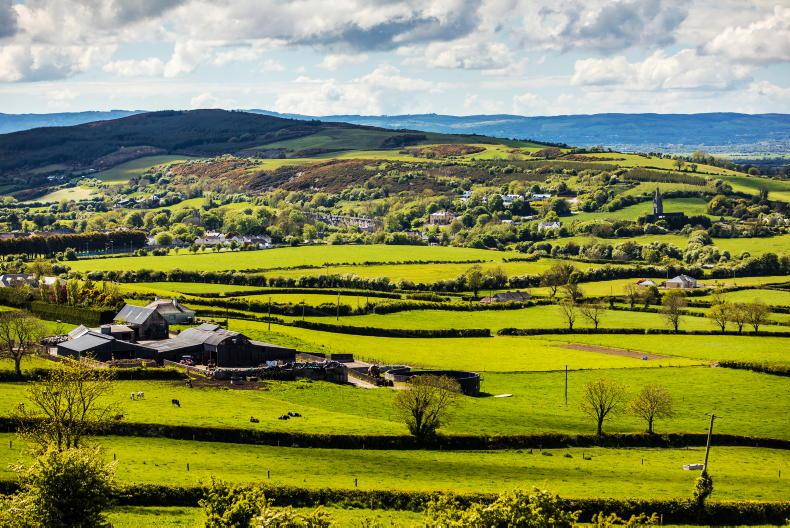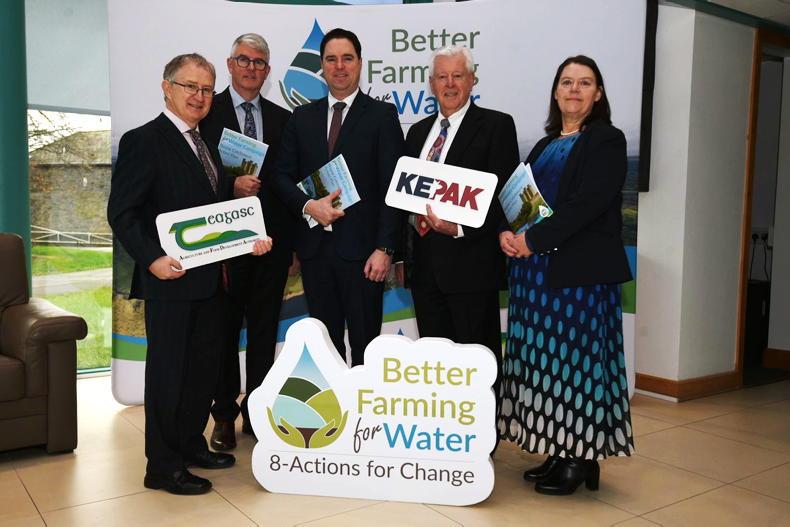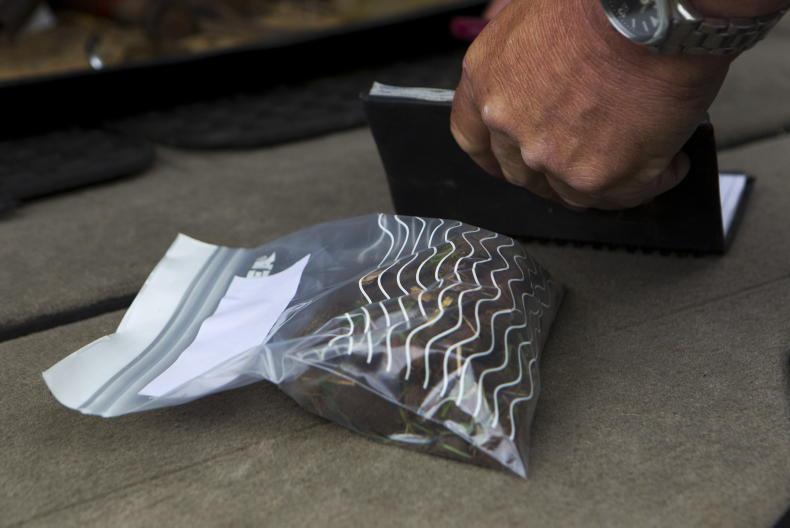The nitrates derogation allows farmers to have a higher stocking rate on their farm than is otherwise permitted.
The maximum stocking rate without a derogation is 170kg organic nitrogen per hectare (N/ha).
This figure was first established in 1991 and was applied across all farms in Europe.
The Nitrates Directive permits member states to exceed this limit and get a derogation if:
They have a long growing season.Grow crops with high nitrogen uptake.High rainfall areas.Soils with exceptionally high denitrification capacity (the ability to turn nitrate into nitrogen gas).It does not conflict with the aims of the Nitrates Directive to improve water quality. What does a derogation
allow farmers to do?
The derogation allows the farmer to stock their farm relative to what grass it can grow. Without a derogation, the maximum stocking rate for most dairy farmers is 1.84 cows/ha.
If a farm is growing 14t DM of grass per hectare, then the Teagasc recommended stocking rate is 2.4 cows/ha, in order to fully utilise the pasture grown.
The derogation enables Irish livestock farmers to have a stocking rate of up to 250kg N/ha.
In return, farmers in a derogation have to follow strict rules on fertiliser inputs, slurry management and a raft of other measures that non-derogation farmers do not have to comply with.
How many farmers are in a derogation?
There were 7,302 applications for a derogation in Ireland last year. The majority of these are dairy farmers and the majority are based in the south and east of the country.
What does the reduction from 250kg N/ha to 220kg N/ha actually mean?
Every animal has an organic nitrogen excretion rate. The average for the farm is the total amount of nitrogen excreted by livestock annually divided by the number of hectares on the farm.
From next year, farmers who are above 220kg N/ha will have to either reduce animal numbers, get extra land or export slurry off their holding.
How many farmers are affected by this change?
It is not known exactly how many farmers are currently stocked greater than 220kg N/ha but the figure is estimated to be over 3,000 farmers.
Farmers who exceed 220kg N/ha will first look at acquiring additional land to dilute their nitrates over a larger area
However, the change will have far reaching impacts for all of agriculture.
For one thing, farmers who exceed 220kg N/ha will first look at acquiring additional land to dilute their nitrates over a larger area.
This will push up demand and prices for leased land.
If farmers cannot lease land they will either seek to get youngstock contract-reared, cease carrying beef stock, export slurry or reduce cow numbers.
Will all parts of the country be affected by this change?
As things stand, it is unclear whether all or some parts of the country will be affected.
Back in early July, the Department of Agriculture published a map showing the parts of the country where a reduction in stocking rate is required, based on the criteria set out by the European Commission.
It would be difficult to see why the Government would impose a stocking rate reduction nationally, when it is not required.
What impact will the reduction have on profitability?
Based on initial financial analysis by ifac, using current milk price and costs for a typical 50ha farm with 114 cows, if cow numbers are reduced, farm profit is reduced by 41%. If additional land can be leased at a cost of €300/ac, farm profit will reduce by 12%.
Will reducing the derogation improve water quality?
Most derogation farmers are located in the south and east, where nitrate leaching is a bigger problem because of free draining soil types.
Leaching
Even where no farming took place, it is likely that nitrate leaching would be highest in this part of the country.
When asked about the impact of reducing the derogation on water quality, Teagasc Agricultural Catchments Programme adviser Eddie Burgess said that overriding factors such as weather and soil type can have a greater impact on nitrates losses than whole farm stocking rate, when fertiliser and slurry applications are sensible and timely.
He says that reducing stocking rate from 250kg to 220kg will not improve water quality.
The nitrates derogation allows farmers to have a higher stocking rate on their farm than is otherwise permitted.
The maximum stocking rate without a derogation is 170kg organic nitrogen per hectare (N/ha).
This figure was first established in 1991 and was applied across all farms in Europe.
The Nitrates Directive permits member states to exceed this limit and get a derogation if:
They have a long growing season.Grow crops with high nitrogen uptake.High rainfall areas.Soils with exceptionally high denitrification capacity (the ability to turn nitrate into nitrogen gas).It does not conflict with the aims of the Nitrates Directive to improve water quality. What does a derogation
allow farmers to do?
The derogation allows the farmer to stock their farm relative to what grass it can grow. Without a derogation, the maximum stocking rate for most dairy farmers is 1.84 cows/ha.
If a farm is growing 14t DM of grass per hectare, then the Teagasc recommended stocking rate is 2.4 cows/ha, in order to fully utilise the pasture grown.
The derogation enables Irish livestock farmers to have a stocking rate of up to 250kg N/ha.
In return, farmers in a derogation have to follow strict rules on fertiliser inputs, slurry management and a raft of other measures that non-derogation farmers do not have to comply with.
How many farmers are in a derogation?
There were 7,302 applications for a derogation in Ireland last year. The majority of these are dairy farmers and the majority are based in the south and east of the country.
What does the reduction from 250kg N/ha to 220kg N/ha actually mean?
Every animal has an organic nitrogen excretion rate. The average for the farm is the total amount of nitrogen excreted by livestock annually divided by the number of hectares on the farm.
From next year, farmers who are above 220kg N/ha will have to either reduce animal numbers, get extra land or export slurry off their holding.
How many farmers are affected by this change?
It is not known exactly how many farmers are currently stocked greater than 220kg N/ha but the figure is estimated to be over 3,000 farmers.
Farmers who exceed 220kg N/ha will first look at acquiring additional land to dilute their nitrates over a larger area
However, the change will have far reaching impacts for all of agriculture.
For one thing, farmers who exceed 220kg N/ha will first look at acquiring additional land to dilute their nitrates over a larger area.
This will push up demand and prices for leased land.
If farmers cannot lease land they will either seek to get youngstock contract-reared, cease carrying beef stock, export slurry or reduce cow numbers.
Will all parts of the country be affected by this change?
As things stand, it is unclear whether all or some parts of the country will be affected.
Back in early July, the Department of Agriculture published a map showing the parts of the country where a reduction in stocking rate is required, based on the criteria set out by the European Commission.
It would be difficult to see why the Government would impose a stocking rate reduction nationally, when it is not required.
What impact will the reduction have on profitability?
Based on initial financial analysis by ifac, using current milk price and costs for a typical 50ha farm with 114 cows, if cow numbers are reduced, farm profit is reduced by 41%. If additional land can be leased at a cost of €300/ac, farm profit will reduce by 12%.
Will reducing the derogation improve water quality?
Most derogation farmers are located in the south and east, where nitrate leaching is a bigger problem because of free draining soil types.
Leaching
Even where no farming took place, it is likely that nitrate leaching would be highest in this part of the country.
When asked about the impact of reducing the derogation on water quality, Teagasc Agricultural Catchments Programme adviser Eddie Burgess said that overriding factors such as weather and soil type can have a greater impact on nitrates losses than whole farm stocking rate, when fertiliser and slurry applications are sensible and timely.
He says that reducing stocking rate from 250kg to 220kg will not improve water quality.









SHARING OPTIONS